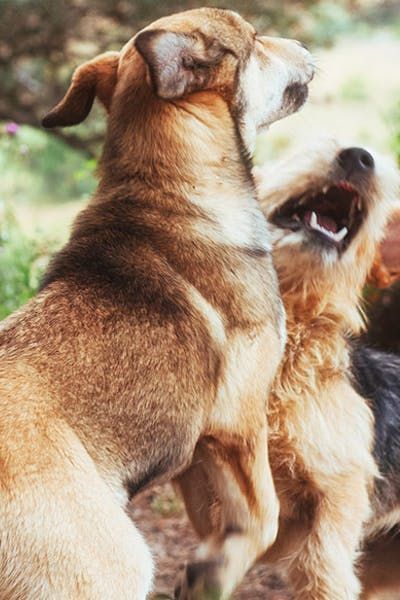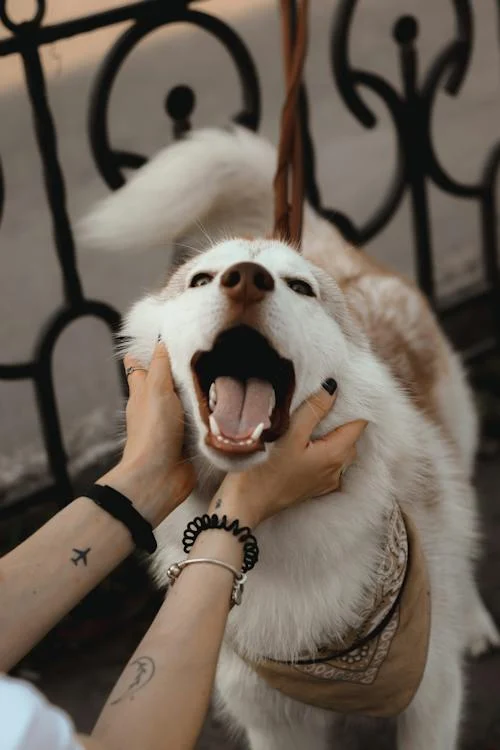Dog aggression can be a concerning issue for pet owners, especially when it involves dogs biting each other. Understanding the reasons behind this behavior and implementing effective training techniques is crucial to ensure the safety and well-being of both dogs involved. In this comprehensive guide, we will explore various strategies and techniques to help you stop dogs from biting each other, promoting a harmonious and peaceful environment for your furry companions.
 Understanding Dog Aggression:
Understanding Dog Aggression:
Dog aggression can stem from various factors, including fear, resource guarding, territoriality, or socialization issues. Biting behavior between dogs can be a form of communication or a response to perceived threats or stressors. It is essential to assess the underlying causes of aggression before implementing any training methods.
Consultation with a Professional:
When dealing with dog-on-dog aggression and biting incidents, seeking the assistance of a professional dog trainer or behaviorist is highly recommended. These experts can evaluate the situation, provide tailored advice, and guide you through the training process. They can help identify triggers, assess body language, and develop a behavior modification plan specific to your dogs’ needs.
Proper Socialization:
Early socialization plays a vital role in preventing dog aggression. Exposing your dogs to a variety of people, animals, and environments from a young age can help them develop positive associations and learn appropriate behaviors. Gradual and positive introductions to other dogs, supervised playdates, and obedience training classes are all valuable tools for fostering good social skills.
Positive Reinforcement Training:
Positive reinforcement training techniques can be highly effective in addressing dog aggression. Reward-based training methods encourage desirable behaviors and discourage aggressive tendencies. Utilizing treats, praise, and toys as rewards for calm and appropriate behavior can help redirect their focus and reinforce positive interactions.
Identifying Triggers:
Understanding the specific triggers that lead to aggressive behavior is crucial for developing a behavior modification plan. Observe your dogs closely and note any situations, objects, or interactions that elicit aggressive responses. By identifying and avoiding these triggers, you can work on desensitization and counterconditioning techniques to help reframe their responses.
Management and Prevention:
Creating a safe and controlled environment is essential when dealing with dog aggression. Ensure both dogs have their own space, including separate sleeping areas, toys, and feeding stations. Avoid situations that may lead to conflicts, such as resource guarding or competition over attention. Always supervise their interactions and intervene immediately if any signs of aggression arise.
Gradual Desensitization:
Desensitization involves exposing dogs to the triggers that cause aggression in a controlled and gradual manner. With the guidance of a professional, you can create step-by-step exposure plans to help your dogs become more comfortable and less reactive. By gradually increasing their exposure to triggers while maintaining a positive and calm environment, you can gradually reduce aggressive responses.
Consistency and Patience:
Addressing dog aggression and biting behaviors requires time, patience, and consistency. Consistently enforcing training techniques, providing positive reinforcement, and managing their environment can help prevent future incidents. It’s important to remember that progress may be slow, and setbacks may occur. Stay committed to the training process and seek support when needed.
Conclusion:
Dealing with dog-on-dog aggression and biting behavior can be challenging, but with the right approach and guidance, it is possible to improve their interactions and create a harmonious environment. Understanding the underlying causes of aggression, consulting with professionals, implementing positive reinforcement training, and managing their environment are essential steps towards stopping dogs from biting each other. Remember to prioritize the safety and well-being of all involved and be patient as you work towards fostering positive and peaceful interactions between your furry companions.



